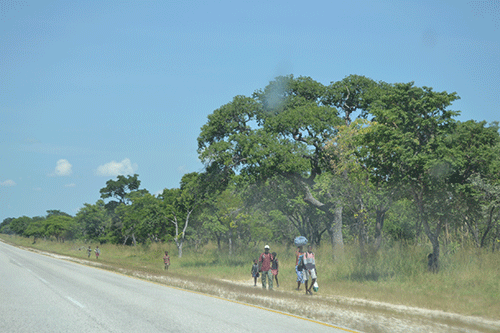KATIMA MULILO - Environment and Tourism minister Pohamba Shifeta expressed dismay regarding recent complaints from some conservancy and community forest members and individuals of benefits not reaching everybody due to tribal set-ups or differences in the Zambezi region.
He had no kind words for the culprits, saying a conservancy or community forest is not a tool to divide community members along tribal, political, racial or ethnic lines, but is a vehicle for rural economic emancipation.
“This should be very clear to everyone concerned. All members of a specific conservancy or community forest should benefit from it, whether they belong to the Masubia, Mafwe, Mashi or Mayeyi traditional authorities. Conservancies and community forests are not based on tribal lines. I urge you all to commit yourselves to nation-building, and not indulge in creating conflicts amongst community members because of tribal affiliations or backgrounds,” Shifeta reacted.
He raised the concern recently during a handover of grants under the “Poverty-oriented support to community conservation in Namibia project” for beneficiaries. It coincided with the launch of the community livelihood, development and human-wildlife mitigation project for the Zambezi region.
Despite the successes of conservancies, the interference of traditional authorities in their affairs in the region has been identified as a major stumbling block which continues to impede progress.
One such complaint was raised by Balyerwa conservancy chairperson Knox Salushando during a recent visit to the region by the parliamentary standing committee on natural resources. The latter gauged progress made by conservancies under the Community-Based Natural Resources Management (CBNRM) programme, which has empowered rural communities to conserve and manage their own natural resources to improve their livelihoods.
“We have had challenges with some families who reside in the area but pay their allegiances to different traditional authorities being sidelined by the relevant traditional authority. These incidents are common in the region, although our constitution clearly stipulates that a community member may only stop being a member when they die, resign, or migrate to other areas, and not through tribal affiliation,” he moaned recently.
The minister thus advised everyone to work together with vigour and determination to achieve national developmental goals as set out in the Harambee Prosperity Plan, National Development Plans, and Namibia’s road map to prosperity, Vision 2030.
Despite the tribal differences, Shifeta pronounced the Zambezi region as one of the shining regions when it comes to wildlife conservation success stories, and community-based natural resources’ management initiatives.
The two project activities that were handed over, both co-financed by the Federal Republic of Germany through the KfW Development Bank and the Namibian government, demonstrate a practical implementation of the resolutions taken at the May 2023 human-wildlife conflict management conference.
These technical solutions and grant programmes are community-led, and are thus empowering communities largely affected by human-wildlife conflict here.
Under the Community Conservation Fund of Namibia, specifically the “Poverty- Oriented Support to Community Conservation in Namibia Project”, the measures to be financed have been identified through a participatory manner, and proposed by the communities themselves.
These will include the construction of predator-proof kraals to protect livestock from predators, various investments in water infrastructure to reduce conflict between people, livestock and the threat from crocodiles and elephants, as it may apply in each conservancy.
Other measures will be investments in tin fencing to scare away hippos and elephants from the crop fields, investments in the Lion Ranger Programme to create a sense of safety in the communities, and equally to create much-needed jobs for conservancy staff.
The Community Livelihood Development and Human-Wildlife Conflict Mitigation Project, also locally known as “Lifolofolo Ki Bupilo Project”, which means “Wildlife is Life”, is the first of its kind where the environment ministry is not only the programme executing agency, but also the project implementing unit alongside the agriculture and fisheries ministries.
Overall, the German government’s financial contribution towards the community conservation fund of Namibia is 19 million Euros (approximately N$382.8 million), of which 8 million Euros (about N$161.2 million) is for human-wildlife conflict mitigation, and 11 million Euros (approximately N$221.6 million) earmarked for mitigating the effects of the Covid-19 pandemic in Namibia’s communal conservancies.
Shifeta implored the beneficiaries of the grants to make maximum and efficient use of the funds provided, and only for the reasons they have been provided.
- anakale@nepc.com.na


